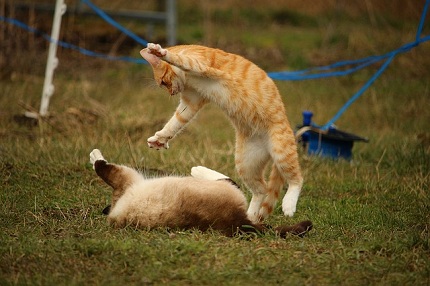How to teach children to play with cats?
How to teach children to play with cats?
Most of the children are fascinated with pets, especially toddlers. However, to ensure they will play and grow in a safe environment, we should teach children to play nicely with cats. Children usually perceive pets as the moveable toys. They need help to understand pet’s feelings and affinities, as well as pet’s body language. If a child is older, then it will be easier to teach him/her what it means when a cat’s ears are pulled back or when it’s tail is moving nervously up and down. However, toddlers, especially boys, like playing with cats on its own way, which usually translates in teasing a cat. While girls like dressing up the cat in doll’s clothes, the boys prefer to yank their tails or pull their ears. In either case, the cat suffers. For that reason, feline experts recommend teaching toddlers by example. They advise us to treat the cats kindly and compassionately, explaining to children what cats need and how they feel in a language that is easily comprehensible. There is no better model to demonstrate how we want children to play with cats. The article “Kids and Pets: What You Need to Consider Before Bringing Something Fluffy Home” gives us a few more suggestions on this issue.
How to teach children to play with cats?
In terms of preparing your children for the arrival of their new pet, it’s worth taking the time to encourage them to imagine things from the animal’s point of view. (Just in case the new puppy isn’t up for playing just yet and would rather hide behind the couch.)
“Get them to think about how the animal may be feeling, because animals have feelings just like us. The animal may be excited to be in a new home, or they may be feeling very scared,” Walton advised.
“Children should be encouraged to give the pet as much space as he/she needs. Parents should research signs of stress in an animal, so they know what to look out for and when to give the pet some time away from the children.”
Our duty as parents is to teach our children how to build a positive and compassionate relationship with cats. Maybe we want to teach them responsibility, too. However, when it comes to taking care of a cat, we should not wait for children accepting their part of the responsibility. There is no excuse for not feeding a cat or not clean its litter box. We can feed a cat together with our kids, but rely only on a child to take care of a cat’s needs is irresponsible. A cat should not be a victim of our argument with children. Feline experts advise us to provide a cat fresh water, good food, and clean litter box and leave children to play and socialize with the cat.










